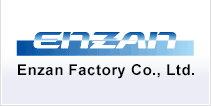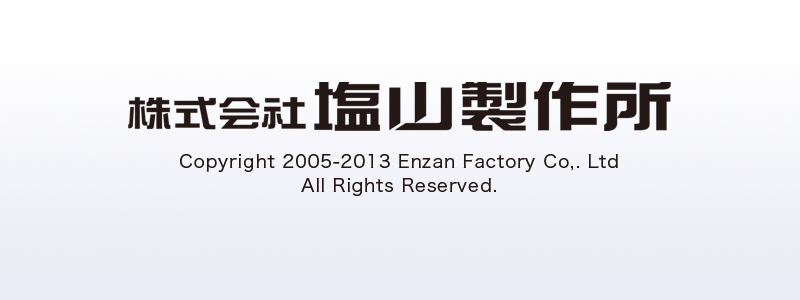Adopted to: 『Product development support subsidies for Monozukuri (manufacturing) SMEs』 of National Federation of Small Business Associations
Title of the research
Prototype development of grinding and polishing ultra thinning process for hard-to-cut material wafers (GaAs、LT)such as high hardness and high vulnerability. (P2131700127)
Business operators
Enzan Seisakusho Co, Ltd.
Researchers
Takashi Sato, Takashi Furuya, Kazunari Yokoyama
Overview of the research
It is now an issue to thin electronic parts that are mounted on various devices such as portable terminals and digital devices because these devices are becoming smaller and higher performance. Accordingly; we aim to satisfy the customers’ demand (cost and quality) by developing grinding and polishing techniques of the difficult abrasives such as lithium tantalate and GaAs which have bumpy surfaces and have solder balls by upgrading the cutting (grinding and polishing) process technology which will make the ultra-thinning process possible which will then provide the developed ultra-thinning process to brand manufacturers.
Research year
2009
Adopted to 『Monozukuri (manufacturing product) development and research subsidies』 of Yamanashi Industry Support Organization
Title of the research
Development of thin wafers with solder bumps
Business operators
Enzan Seisakusho Co.,Ltd.
Researchers
Takashi Sato, Takashi Furuya, Kazunari Yokoyama
Overview of the research
We are adept at processing the back side of the semiconductor wafer and given a contract for the processing of a wide variety of semiconductor wafers from major wafer manufacturers. Our established thinning process is able to mass produce and can process surface bumps about 20μm and thickness up to 30μm, and we believe we are one step ahead for processing stability, versatility and quality compared to the other processing manufacturer. Currently; there are many requests for processing thinner wafers and surface bumps over 80μm. We research and develop technologies that meet the needs by extending our established stable process in mass production.
Research year
2009
Adopted to 『Support project for sophisticating strategic base technology 』 of Ministry of Economy, Trade and Industry
Title of the research
Development of laser dicing technology that corresponds to the next-generation electronic devices (Kanto 0608031-3)
Research manager
Yamanashi Industry Support Organization
Researcher group
University of Yamanashi, Yamanashi Industrial Technology Center, Enzan Seisakusho Co, Ltd.
Researchers
University of Yamanashi, :Harimoto (Associate Professor),
Yamanashi Industrial Technology Center: Kiyotoshi Takao and Toshiyasu Komatsu,
Shinshu University: Takashi Hosono (Assistant teacher)
Enzan Seisakusho Co. Ltd.: Hiroshi Matsuzaka・Kohei Yamada・Takashi Sato・Kazunari Yokoyama and Masanori Dobashi
Overview of the research
Realization of the dry process by laser with high-precision and high-speed was required because conventional semiconductor wafer cutting process by rotating blades had big problems with damaged chips from the cutting vibration and also a low yield rate with having a wide cutting width. Accordingly: developing laser dicing technology for practical use by creating a prototype experimental device that generated a variety of laser beams and established an ideal processing condition and controlling technique of the laser beams using the device.
Research year
2007~2009
Adopted to 『Development and research subsidies project』of Yamanashi Industry Support Organization
Title of the research
[Development of dicing technique of Si by using laser]
Business operators
Enzan Seisakusho Co, Ltd.
Researchers
Takashi Sato, Kokei Yamada, Masanori Dobashi
Overview of the research
We had an advanced mass production and technological development of conventional rotating blades processing system. However, we realized the limitations of it and started developing a new laser dicing technology. The purpose of this research project is to examine technology to reduce debris (adhesion of molten refuse) which occurs in the laser dicing process and make it applicable to mass production.
Research year
2006
Entrusted with 『Dragon gate project 』support of : The Kofu Chamber of Commerce & Industry
Dragon gate project
This is the generic name of the industry-academia collaboration support project managed by the Kofu Chamber of Commerce & Industry. Support for a variety of attempts for leading new manufacturing while taking advantage of the seeds at Yamanashi University.
Support content
We can receive advice from the professional of TLO in Yamanashi for free. Funds for market research to make practical use of technology and incubation facilities in Yamanashi University as a research space for 3 years.
Research task
(1)Make laser dicing process applicable to mass production.
(Establish conditions of using YAG laser)
(2)Examination for applying fem to second laser in dicing.
Research term
3 years (April 2006 ~ March 2008)
Acquisition of authorization for 『 Specific research and development project based on the law article 4 paragraph 1 concerning sophisticating basic manufacturing technology of SMEs』of Ministry of Economy, Trade and Industry
Title of the research
[Development of laser dicing technology that corresponds to the next-generation devices]
Business operators
Enzan Seisakusho Co,Ltd.
Researchers
Takashi Sato, Kokei Yamada, Masanori Dobashi
Overview of the research
Research and development of the laser dicing technique that uses a laser beam for high yield rate by reducing cutting width. Initially establish an ideal process condition and control technology of the laser beams and then research for practical use by using the laser dicer that loads the technology.
Entrusted with 『Emphasis support for local SMEs』 of Yamanashi Industrial technology center
Technical issues
Dicing technology by using YAG laser
Support term
Dec 2nd 2005 ~ Feb 17th 2006
Support cooperator
Yamanashi Industrial Technology Center
Advanced Technology Development Dept.: Shinichi Nakayama
Adopted to 『Expense support project for creative technology research and development in Yamanashi』
Title of the research
[Development of the back side thinning process and dicing & dividing process for thin IC chip with thickness 20μm and size of 150μm square.]
Business operators
Enzan Seisakusho Co.Ltd.
Researchers
Takashi Sato, Tokuo Naito, Yoshimori Hara, Hideki Takekawa
Overview of the research
Take measure of the limit for minimum cutting width of conventional dividing method (dicing) and then develop a process to reduce cutting width with make a prototype by laser and etching as a new type of dividing method. At the same time, develop thinning process to make IC chip thickness 20μm as a thinning prototype in addition to the conventional method and establish a process development of an ideal thin IC chip with combination of the dividing method described above.
Research year
2005
Acquisition of 『 authorization of article 4 paragraph 3 on the Act on Temporary Measures concerning the Promotion of the Creative Business Activities of SMEs』
Title of the research
[Development of the back side thinning process and dicing & dividing process for thin IC chip with thickness 20μm and size of 150μm square.]
Business operators
Enzan Seisakusho Co.Ltd.
Researchers
Takashi Sato, Tokuo Naitou, Yoshimori Hara, Hideki Takekawa
Overview of the research
It is expected to have an increase in requests for applications with personal or thing identifier such as IC card, IC credit card, IC bank card and IC paper money to prevent forgery in the contemporary network age. Creating inexpensive chips and processing thin IC chips that are implantable into thin things such as cards and paper money to meet these requests will become an issue. For the purpose of solving this issue: develop a process that can cut small IC chip with divided areas of 10μm with a reduction in cost and develop IC chip with thickness 20μm that is implantable into thin things. Development plan is a total of 3 years, 1st year: research and basic experiment, 2nd year: establish a new process, 3rd year: establish a process for applicable mass production.
Research year
2005
Adopted to 『Research and development project for practical use of business creation from university (feasibility study project)』of NEDO
Title of the research
[The feasibility study related to high density via hole process that correspond to millimeter-wave device]
Business operators
Enzan Seisakusho Co.Ltd.
Researchers
Yamanashi Graduate School for Material Engineering of Medicine and Engineering Research Section : Shun Matsumoto
Takashi Sato, Kazuhisa Tukahara
Overview of the research
Research on research and development of via hole processing technology to meet the demand of high frequency, high-power and densification for wireless telecommunications devices. Establish a concrete process of etching technology that refers hydrogen plasma based on the crystal defect repair technology of compound semiconductor at University of Yamanashi and survey the superiority of it to other technological processes at the same time. In order to increase the compatibility of this technology, we must research the integrity of the other technical elements of the
manufacturing process for integrated circuit that is incorporating it with this technology.
Research year
2003
* About『Research and development project for practical use of business creation from university』
This is conducted by New Energy and Industrial Technology Development Organization (NEDO) for the purpose of creating new jobs in the industry by promoting commercialization of the research results at University. There is a Feasibility Study Project (F/S) and a Research and Development Project (R&D) for the matching fund project. The Feasibility Study Project (F/S) supports the feasibility study to decide the possibility of the project before Research and Development Project (R&D) only if the private business operator is a SME. Research and Development Project (R&D) utilizes university research results and promote commercializing it by private business operators by supporting the research and development and searching the possibility of commercializing the industry-academia collaboration.
Adopted to 『Expenses support project for creative technology research and development in Yamanashi』
Title of the research
[Establishment of a processing method for tip shape (V groove shape) of thin blade grinding stone]
Business operators
Enzan Seisakusho Co.Ltd.
Researchers
Norihide Matsuzaka
Overview of the research
There is not only a requirement for the cutting process during the dicing process; but there is an increase requirement for creating a V groove shape. However it is difficult to process this stably with the current processing method. Therefor;e truing the grinding wheel has become necessary during processing. To meet these requirements we established the precision truing techniques.
Research year
1998



